Weird Stuff About Light and Color

(No, this doesn’t end up being about philosophy. Once a decade I’m allowed to write about something else.)
Here, in no particular order, are some random weird facts about light and color:
1 - “White” is not a color frequency. It is what we see when there are a bunch of different color frequencies combined, across the whole spectrum. If you doubt it, find something that spins really fast, and cover the whole surface with solid blue, red and yellow segments. When it is spinning fast enough, it will appear white. (If you mix all the paints together instead, you’ll get a dark mush.)
2 - The colors we see are often not the colors that are really there. Try making a bunch of really tiny blue dots and really tiny red dots on a piece of paper, and look at it from a distance. It will appear purple, even though none of it is actually emitting the frequency of purple. Unlike our ears, which can simultaneously detect multiple sound frequencies at the same time (like several notes in a musical cord), in any one place our eyes can only “see” one frequency, and often our eyes fudge things and make us see a frequency that isn’t even really there.
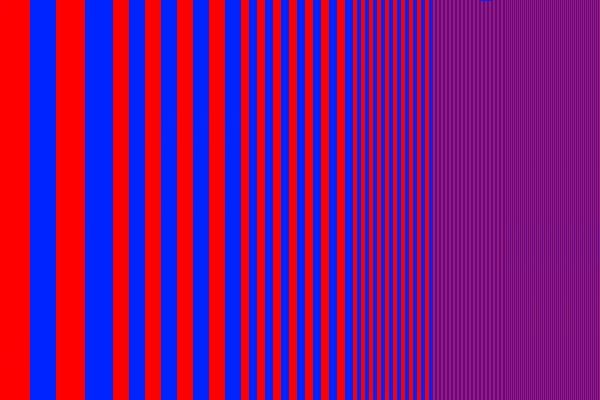
3 - As one example of this, when we see a star, or something else burning, we see it as one color (e.g., white or yellow), when it is actually emitting many different frequencies. A spectrometer can tell us what elements make up the thing that is burning, because different elements give off different frequencies as they burn. (My theory is that our eyes and brains intentionally limit and “fudge” what we see, because if we could actually see many separate frequencies from one point at the same time, the way a spectrometer does, there would be way too much damn information for our brain to even process it.)
4 - Snowflakes are not white. They are clear. They are, after all, made of ice. The reason snow looks white is because countless tiny facets of the ice crystals are refracting and reflecting light from all directions, and all colors together appear as white.
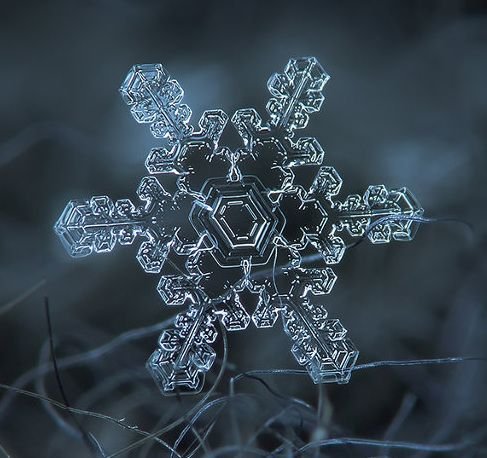
5 - If you take all the frequencies, but add an extra dose of green (or, to put it another way, combine white with green), we call the result “light green.” Do the same thing with blue and we call it “light blue.” Do the same thing with red and … it’s “pink.” There’s no such thing as “light red.” (I’m still not sure if this has more to do with our language, our eyes, or our brains.)
6 - Silver is not a color. It is what we call something that is 100% reflective. A mirror, for example, is “silver,” but all it does is reflect other things, without adding or modifying the color of those other things. Likewise, if you look closely at a well-polished silver tea pot, for example, you will see that you’re merely seeing twisted, bent, distorted reflections of other things around it. A “silver” object in space appears black (except little white specks of reflected stars). A “silver” object in a completely blue room appears completely blue.
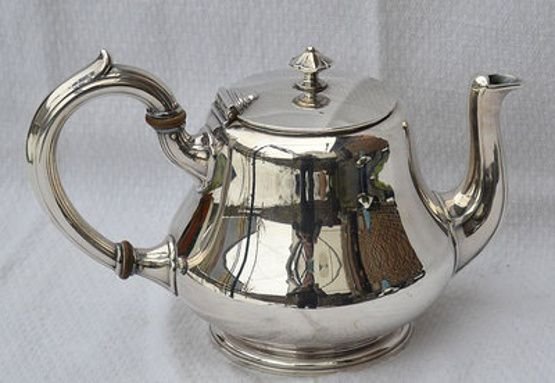
7 - The concept of “gold” as a color is weird. What it actually refers to is a surface that reflects other things around it (like silver), but which also adds a yellowish tint to the reflection. So “gold” refers to reflection plus a certain color. We don’t have such a simple term for something that is reflective but adds a tint of blue, or green, or red. Only yellow/orange.
8 - Our eyeballs automatically adjust the size of our pupils depending on how bright things are, but they also tell our brain that they are doing that. As a result, the amount of light hitting our retinas (the back of our eyeballs) may be the same in a dark room and in a light room, and yet our brain knows that one is brighter.
9 - When a camera aperture does something similar, changing size to control the amount of light being let in, it obviously does not tell our brain about it. So if we see pictures of a light room and a dark room, but with the camera adjusting its “pupil,” we can’t tell the difference.
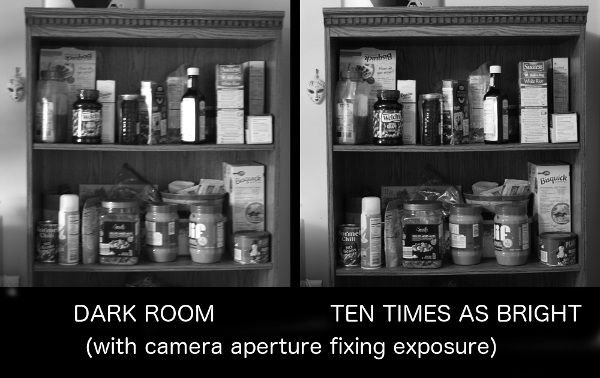
10 - I will end with one that I still don’t understand. When it comes to using pigments—paint, for example—the three primary colors, from which you can create all the others, are red, blue and yellow. But when it comes to using light, the primary colors are red, blue and green. (People who do computer graphics, and also art with physical mediums, know this.) I still don’t get why one of the primary colors changes. What the poop?
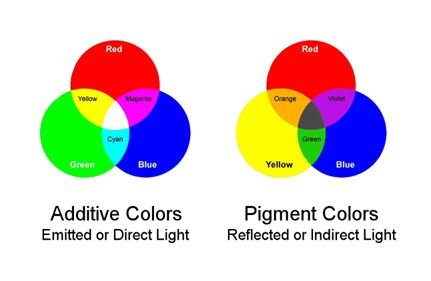
(P.S. Some time I hope to make an animated video showing why rainbows look like that to us—the arc with different color bands—because it’s really dang cool.)
We now return you to your regularly scheduled mayhem.
I've always wondered about that as well. I suspect is related to the fact that one is reflected and the other a source of photons. There is no such thing as a perfect reflector. I suspect the properties of the reflected energies are different than the original, and we probably don't fully understand the way frequencies combine from those sources.
Let's talk about this over a beer at Anarchaulco :) I'm looking forward to meeting you there!
I've been reading a lot of Tesla research this past weekend, which discusses many things about the nature of electricity, magnetism and light. When it comes to a complete understanding of these things there is much we don't know, or we're not allowed to know.
I am extremely curious about such things and always have been. I dabble in free energy research and have kept abreast of activities in that realm for over 10 years now. My curiosity intensified when I encountered Patrick Kelly's research.
I spent many hours this past weekend reading a document produced by youtube user TheMage00000 (Ernst) who claims to have spent over 20,000 hours researching and collecting original writings from or about Nikola Tesla. You can find the latest 66 page PDF which is focused on Tesla's Wardenclyffe experiements here.
There is a great deal of information in those 66 pages, including many theories about the nature of ether, light and various forms of radiation.
I have often dreamed about living during the time of Edison and Tesla. As a child I said I wished I lived then. Now however I wouldn't trade living now for then. We indeed live in very interesting times, and we just might be on the verge of world changes we can't even imagine.
I love how your end your article, I'll get back to you on this subject, very soon! Thank you very much your sharing, which was actually close to philosophy in parts... You "almost" cheated! ;) All for one and one for all! Namaste :)
Dang... I'm gonna have to start up-voting comments to counteract @asshole... I'm getting more and more curious about what it would take to address the weakness of Steem that they're exploiting...
I'm glad to see someone above already posted about additive and subtractive colour mixing. I think I've been vaguely aware of the basic colours used in printing since peering into my first dot matrix printer but I note in more recent times that some higher end consumer grade printers offer quite a few more pigments than that. Also, not long after my introduction to dot matrix printers, I found out about 24bit colour palettes (8 bits each for red, green & blue - 32bit colour adds an 8bit alpha / transparency channel) and assumed that was the be-all and end-all of digital colour definition. Even then, in the '90s, that didn't last for long. 48bit colour has been around for quite a while - I've got no idea how popular / in-demand it is though... But keep an eye out (so to speak...) for displays (and cameras...) that go beyond the absolute necessity of red, green, blue colour production and 'mere' 24bit colour depth. Companies like Sharp already make displays using additional subpixel yellow... cnet article, Ultra HD 4K TV color, part I: Red, green, blue and beyond
Even have to up-vote my own comments thanks to @asshole...
You are correct about the additive primary colors, red, green, and blue. For reflected light the subtractive primary colors are magenta, cyan, and yellow. These are the colors of the inks in your color printer. Each of these primary colors subtracts or absorbs one of the additive primary colors. Cyan absorbs red (reflecting green and blue, which combine to be seen as cyan). Magenta absorbs green and yellow absorbs blue. So to get blue, for example, reflected from your printed page, you must subtract red and green, so the printer combines both cyan and magenta pigments. When all three subtractive primary colors are combined, all additive primary colors are absorbed (red, green, blue) and we see nothing reflected back (i.e. black).
I really enjoyed reading this @larkenrose Thanks
Your eyes will simulate detection of both a frequency, and peak width. I'm saying this in response to your statement that the eyes detect "one frequency". This is true, they will identify one frequency as the center of a (roughly) bell-curve shaped spectrum of frequencies. If the spectrum is sharply peaked at one frequency, it will look like a very "pure" color. If it's a broad spectrum (wider bell curve, including additional nearby frequencies), the color will look de-saturated. Broadening or sharpening the peak width is what you are doing when you play with the saturation slider on an HSB widget (Hue, Saturation, Brightness). Fully desaturated means the peak is wide enough to equally include the whole spectrum, and it looks white or grey.
(And yeah, things are a little funny when you mix red and blue light, omitting green, to get purple. Technically it's a double-peaked spectrum, but your eyes/brain treat the spectrum as if it wraps around at the edges, thus locating a pseudo single peak on a ring-shaped continuum.)
Ah, I love this stuff, Larken! Reminds me of the afternoon talking all kinds of randomness at "your rock" at PorcFest. :)
One of my favorite stories about color (and how it is impacted by language) involves the Himba tribe from Namibia. Check it out, I think you'll like it.
There is so much of this going on, it's kinda freaky. We don't actually "see" what we think we see either because the brain is filling stuff in and making stuff up all the time. We have so many shortcuts and they all have primitive, evolutionary explanations.
Can we become AI-powered cyborgs yet?
Well, that was weird as poop.
Great post! So interesting to think and wonder about pieces of information like this :)
The one about the silver and gold was really interesting.
fina bilder thanks